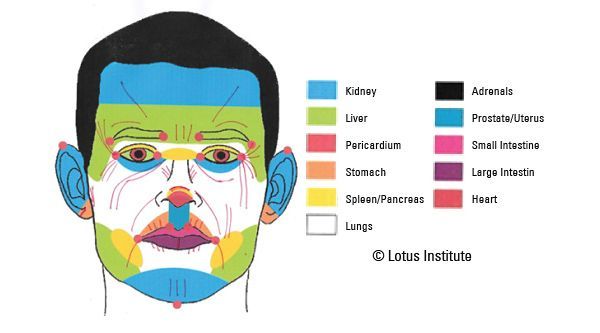Whether you accept it, avoid it or live somewhere in between, insurance coverage has become a defining issue for our profession. Patients increasingly expect to use their benefits, practitioners want to be compensated fairly for their time and expertise, and the system itself remains – at best – fragmented. The encouraging news is that coverage has expanded in meaningful ways. The challenging news is that reimbursement, across the board, remains inadequate.
The Emotional Anatomy of Face Wrinkles
Facial muscles work together to control the movements of your face. Of the 42 facial muscles, approximately 20 are known as mimetic muscles. Commonly referred to as "muscles of expression," these superficial, flat skeletal muscles attach to the face from bone to skin, muscle to skin or muscle to muscle.
The Muscles of Expression
Mimetic muscles function predominantly to open and close the eyes and mouth or tug on the skin to create facial expressions. Take, for example, the orbicularis oris. The orbicular oris is a sphincter-like muscle encircling the lips and defining the mouth. It is attached to and controlled by four independent quadrants of interfacing muscle groups. It is the stretching, contracting and pulling of these muscles that shape the mouth and move the lips when smiling, frowning or pouting.
For some mimetic muscles, there is more than a one-to-one correlation between structure and function. The fan-shaped corrugator muscle, located between the inner eyebrows and mid-forehead, rely on three separate muscles to draw the brows down and together. Furrowing the eyebrows, and eventually the creases that develop between and around the eyes, are the result of the repeated contraction of these muscle groups.
Mimetic muscle movement for facial behavior gesturing is multifold. Speech illustration gestures include lowering the brows when lowering the voice. Cognition gestures involve movements such as furrowing the brows when concentrating, or pursing the lips when conducting mental searches. Emblematic gestures convey the symbolic meaning suggested by spoken words, such as a raising the upper lip and depressing the lower lip up when expressing doubt.

Emotion Signaling
Emotion signaling is the use of facial muscles to signal a range of emotional states. By far the most abundant research on facial behavior has focused on emotion signaling. The notion of emotions being linked with mimetic muscle expression has roots in the work of Charles Darwin.1
Darwin claimed that humans, regardless of race or culture, innately and universally express a multitude of emotions in the same way, with the same facial expressions. Anger is expressed by furrowing the brows and tightening the lips. Raising the corners of the eyebrows, lowering the center of the brow, raising the upper eye lid, stretching the lips, and dropping the jaw when illustrated in tandem denotes fear.
Work by Tomkins2-3 also demonstrated that the root of emotional expression resides in the movement of facial mimetic muscles. Extensive research by Tomkins and Eckman4 revealed that within and across cultures, there are six innate human emotional expressions: anger, disgust, fear, happiness, sadness, and surprise.
Methodologies to measure facial behavior validly and reliably in the 1970s led to the development and institution of the Facial Action Coding System (FACS).5 Today, the FACS is the most comprehensive and objective system of recognizing and interpreting emotions as they relate to facial expressions.4
Face Reading: Mien Shiang
Face reading in Chinese medicine has a well-documented history. Utilized by ancient Taoist alchemists and Chinese doctors alike, numerous references in the classic texts refer to facial signs as diagnostic indicators of physical, emotional and spiritual well-being.

Translated as face (mien) reading (shiang), this Asian medicine diagnostic tool is used to understand many aspects of one's life, including predominate and repressed emotions, character traits, patterns of behavior, current health, past illness, and personal trauma.
Forehead | |
| Thin lines | Weak kidney qi |
| Broken lines | Unresolved issues |
| Transverse line | Transformation or trauma |
Eyes | |
| Perpendicular lines between eyebrows | Repressed liver qi leading to frustration, anger |
| Above the eyebrows | Hypertension, mania |
| Upper end of eyebrows | Skepticism, distrust |
Cheek | |
| Vertical lines | Lung qi deficiency, grief, sadness |
Mouth | |
| Above the upper lip | Overnurturing others |
| Below lower lip | Bitterness, lack of satisfaction of one’s life |
Chin | |
| Horizontal line | Pushing the body too far, doing something your body does not want or like. |
According to the work of Lillian Pearl Bridges,6 one's collective experience – who you are, how you feel now, how you felt in the past, what and how life experiences have affected you – is revealed on the face. According to mien shang, when it comes to emotional face markings, both present and past, it doesn't matter what happened to you; what matters is how you feel about what happened to you.
In general, face markings such as vertical, horizontal, and diagonal lines, creases, and wrinkles located on different parts of the face represent distinct phases of one's life. The ears represent the first seven years of life. The hairline expresses adolescence, the forehead represents the 20s, the eyebrows and eyes the 30s, the nose the 40s, the mouth the 50s, the chin the 60s, and the jaw area the 70s. The impact of one's life events at various life stages also affects the Asian medicine organs and organ systems.
Clinical Applications
As practitioners of traditional East Asian medicine (TEAM), we understand the mind-body-spirit connection and realize they are inextricably linked. As a practitioner of cosmetic facial acupuncture for over 30 years, I use mein shiang to help recognize the underlying significance of my patients' wrinkles, sagging skin, face tone and complexion.
In our Western, youth-driven culture, there is an overwhelming urge to erase the visible signs of aging with superficial youth-enhancing procedures. With the help of mein shiang, cosmetic facial acupuncturists learn to additionally recognize and address patients' underlying emotional and psychodynamic aging concerns.
Erasing emotional and physical markings is not easy, as it requires the patient to consciously decide to understand why these marking and wrinkles are occurring and change the pattern of behaviors that create them. However, once engaging in this path, wrinkles resolve, face sagging lifts, complexion is brighter, and the true meaning of the TEAM integrated mind-body approach to health and healing begins.
References
- Darwin C. The Expression of the Emotions in Man and Animals. Greenwood Press, 1969.
- Tomkins SS. Affect, Imagery, and Consciousness, Volume 1: The Positive Affects. New York: Springer, 1962.
- Tomkins SS. Affect, Imagery, and Consciousness, Volume 2: The Negative Affects. New York: Springer, 1963.
- Ekman P. Darwin, Deception, and Facial Expression. In Ekman P, Campos JJ, Davidson RJ, de Waal FBM (eds.): Emotions Inside Out:130 Years After Darwin's; The Expression of the Emotions in Man and Animals. New York, NY: New York Academy of Sciences, 2003: pp. 205-221.
- Ekman P, Friesen WV. Nonverbal Behavior. In Ostwald PF (ed.): Communication and Social Interaction. New York: Grune & Stratton, 1977: pp. 37-46.
- Bridges L. Face Reading in Chinese Medicine, 2nd Edition. Churchill Livingstone, 2012.



